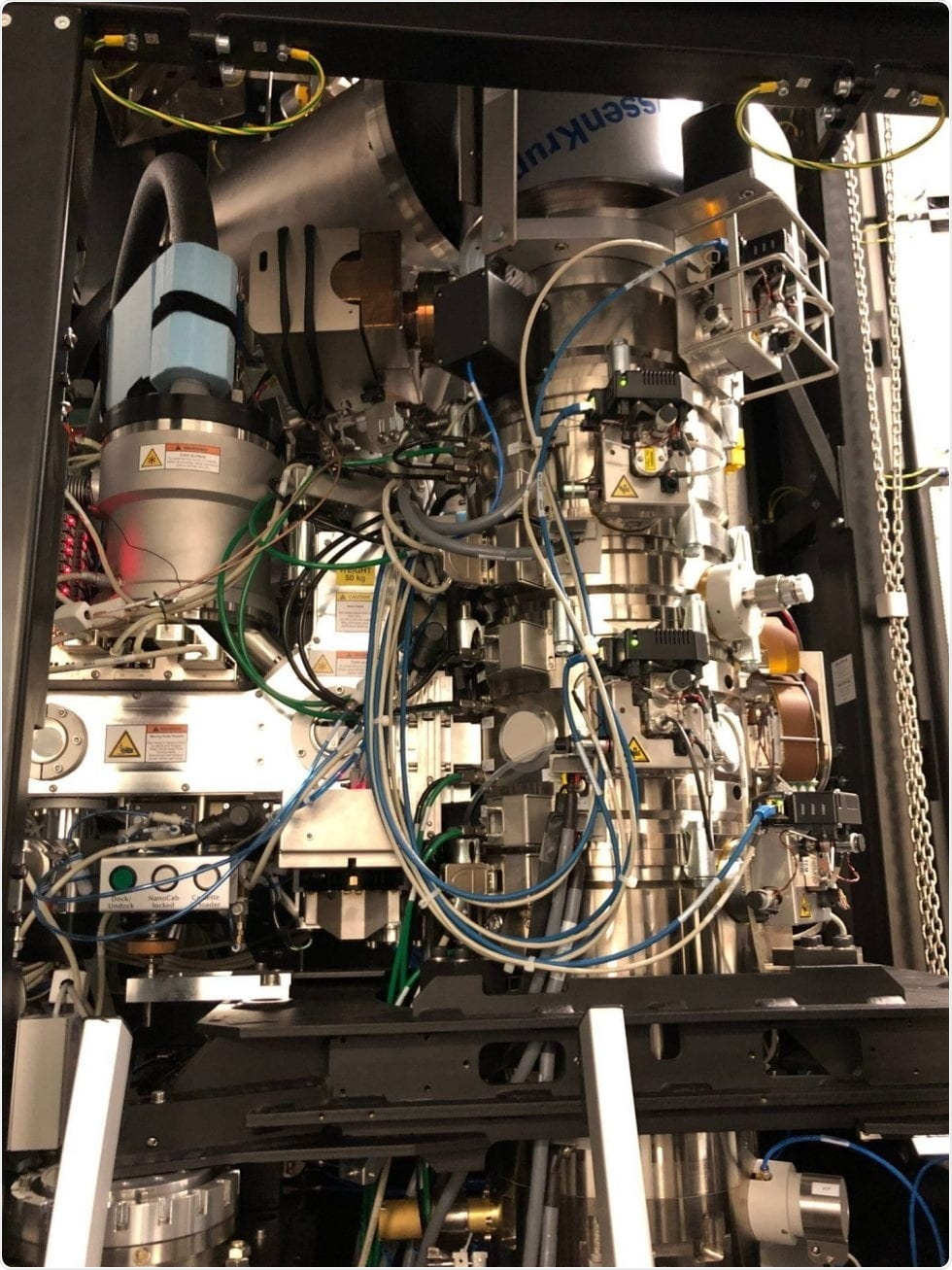Proteins are the building blocks of all living things and numerous studies are carried out to determine how these proteins are made and their function. This includes enzymes that perform chemical reactions to messengers that transfer signals between cells.

Cryo-electron microscopy (cryo-EM) involves flash-freezing solutions of proteins and then using a powerful electron microscope to produce images of individual molecules or subcellular structures. Image Credit: University of Chicago.
In 2004, Aaron Ciechanover, Avram Hershko, and Irwin Rose won the Nobel Prize in Chemistry for a distinct but vital mechanism of protein machinery—how organisms break down proteins when the prescribed function is carried out.
Protein degradation is a cautiously organized process. Proteins are labeled for disposal with a molecular label named ubiquitin. They are later fed into proteasomes, a type of cellular paper shredder that cuts up the proteins into smaller pieces. This mechanism labeling protein with ubiquitin—called ubiquitination—is involved in numerous cellular processes, including immune responses, cell division, and DNA repair.
Scientists from the University of Chicago employed state-of-the-art electron microscopes to dive deeper into the process of protein degradation. The researchers detailed the structure of a major enzyme that helps in mediating ubiquitination in yeast. Part of a cellular mechanism named the N-degron pathway might be the reason for determining the rate of degradation for around 80% of equivalent proteins in humans.
Accumulation of damaged or misfolded proteins occurs due to malfunctions in the pathway. This underlies the aging process, neurodegeneration, and some rare autosomal recessive disorders. Hence a better knowledge offers an opportunity to create novel treatment processes. The study was published on November 17th, 2021, in the Nature journal.
Minglei Zhao PhD, Assistant Professor of Biochemistry and Molecular Biology, and coworkers analyzed an E3 ligase—a kind of enzyme that helps combine larger molecules together—known as Ubr1.
Ubr1, in baker’s yeast, starts the ubiquitination process as it binds ubiquitin to proteins and stretches it into a chain of molecules called a polymer. Polymers, generally known as the building blocks of synthetic materials like plastics, also occur naturally when big molecules (like ubiquitin) are linked in repeating subunits.
Until this study, we didn’t know that much about how ubiquitin polymers are structurally formed. Now we are starting to get an idea of how it’s first installed onto the protein substrate, and then how the polymers are formed in a linkage-specific manner. This is a milestone in terms of understanding polyubiquitination at a near-atomic level.”
Minglei Zhao, Assistant Professor, Biochemistry and Molecular Biology, University of Chicago
In the current research, Zhao and the group employed chemical biology techniques to imitate the first steps of the process for binding ubiquitin to proteins. The researchers used cryo-electron microscopy (cryo-EM)—another Nobel Prize-winning innovation—to capture the process.
Cryo-EM uses flash-freezing solutions of proteins and employs a robust electron microscope to create pictures of subcellular structures or individual molecules. Around a decade ago, advancements in hardware and software-generated microscopes and detectors can capture molecular images at greater resolution.
Jacques Dubochet, Joachim Frank, and Richard Henderson won the Nobel Prize in Chemistry in 2017, for creating cryo-EM techniques, which enables scientists to generate a snapshot that freezes “live” action of a biological mechanism.
Zhao and researchers took advantage of a $10 million investment by the Biological Sciences Division in the Advanced Electron Microscope Facility to utilize cryo-EM to analyze ubiquitination elaborately. The scientists could detail the structure of numerous intermediate enzyme complexes involved in the pathway. This would enable scientists to examine ways to target proteins with drugs or interfere in a malfunctioning protein degradation process.
Cryo-EM is exciting because after the data processing is done, a new structure pops out that you’ve never seen before,” Zhao said. “Now we can use what we’ve learned and repurpose the enzymes by introducing small molecules or mixture of peptides to degrade the proteins we want.”
Minglei Zhao, Assistant Professor, Biochemistry and Molecular Biology, University of Chicago
Source:
Journal reference:
Pan, M., et al. (2021) Structural insights into Ubr1-mediated N-degron polyubiquitination. Nature. doi.org/10.1038/s41586-021-04097-8.